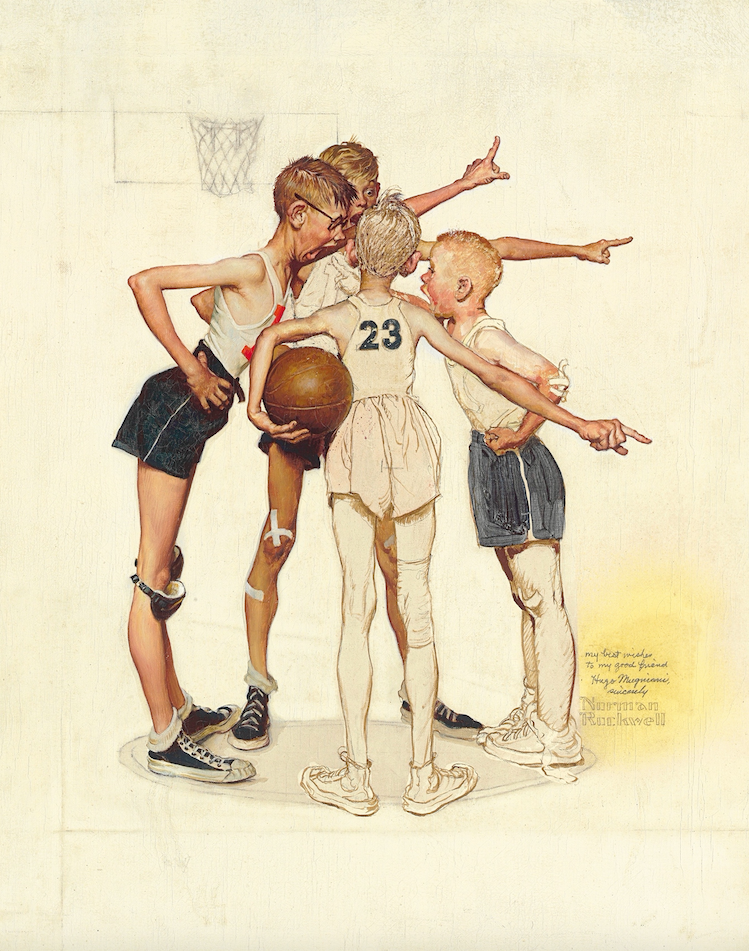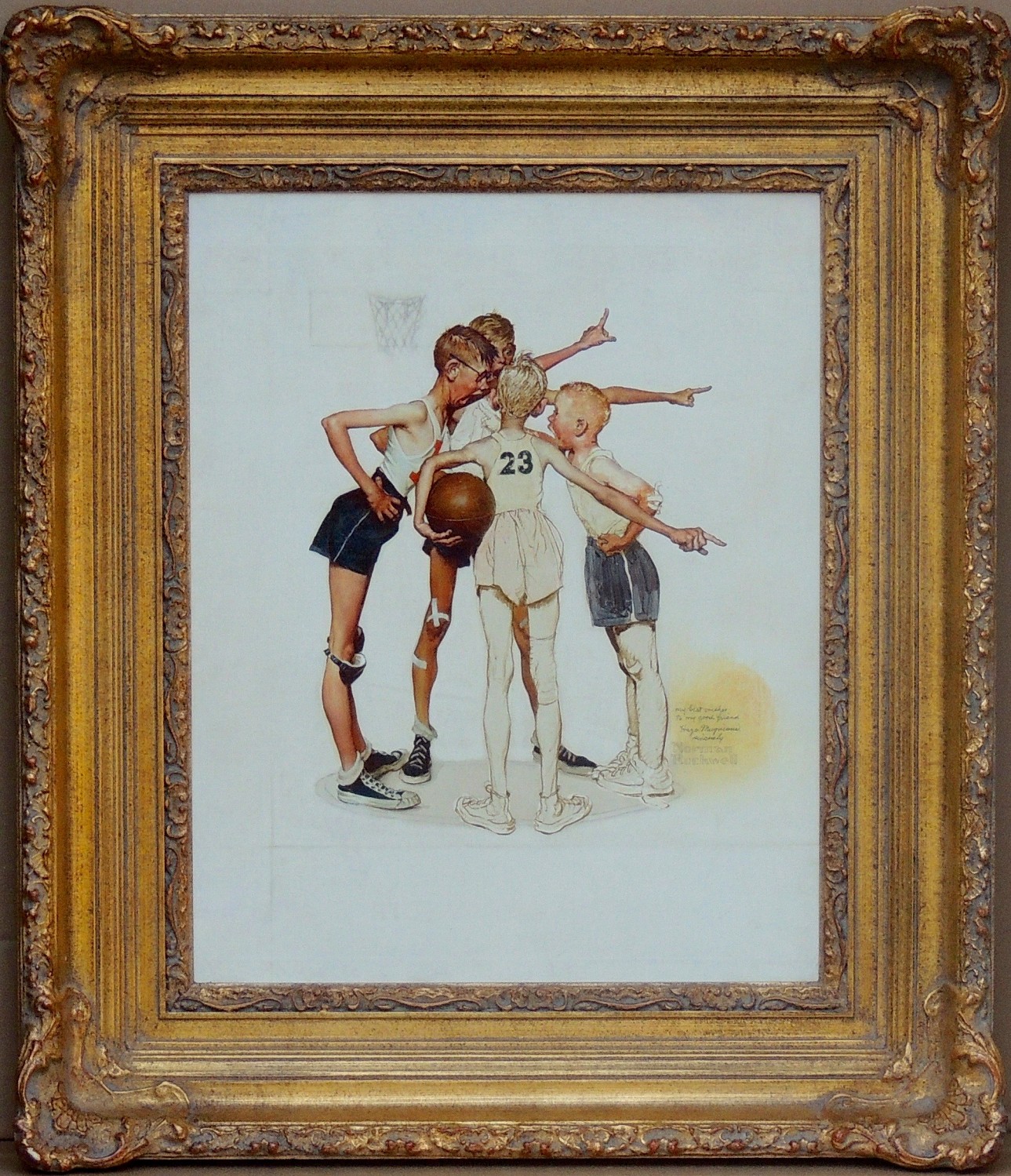"Study for 'Four Sporting Boys: Basketball' Brown & Bigelow Calendar" Lot no. 3034
By Norman Rockwell (1894-1978)
1951 (Estimated)
20 1/8" x 16"
oil and pencil on canvas
signed and inscribed 'my best wishes/to my good friend/Hugo Mugnaini,/since
SOLD
SOLD
This piece is a study for the winter image of a 1951 Brown & Bigelow "Four Seasons" calendar.
L.N. Moffatt, Norman Rockwell: A Definitive Catalogue, vol. I, Stockbridge, Massachusetts, 1986, p. 309, no. A124A.
Norman Rockwell is arguably the best painter of expressive attitudes. The three tall skinny boys contrast tellingly with the short solid boy. While they point one way, he points the other way, determined to stonewall them. In this inscribed comprehensive study for the 1951 Winter Brown & Bigelow calendar, Rockwell uses gesture and a touch of caricature to capture the essence of youth and create what might be called the comedy of contrast.
Explore related art collections: Children / Sports / Studies
See all original artwork by Norman Rockwell
ABOUT THE ARTIST
The pictures of Norman Perceval Rockwell (1894-1978) were recognized and enjoyed by almost everybody in America. The cover of The Saturday Evening Post was his showcase for over forty years, giving him an audience larger than that of any other artist in history. Over the years, he depicted there a unique collection of Americana, a series of vignettes of remarkable warmth and humor. In addition, he painted a great number of pictures for story illustrations, advertising campaigns, posters, calendars and books.
As his personal contribution during World War II, Rockwell painted the famous “Four Freedoms” posters, symbolizing for millions the war aims as described by President Franklin Roosevelt. One version of his “Freedom of Speech” painting is in the collection of the Metropolitan Museum of Art.
Rockwell left high school to attend classes at the National Academy of Design, and later studied under Thomas Fogarty and George Bridgeman at the Art Students League in New York. His two greatest influences were the completely opposite titans Howard Pyle and J.C Leyendecker.
His early illustrations were done for St. Nicholas magazine and other juvenile publications. He sold his first cover painting to the Post in 1916, and ended up doing over 300 more. Presidents Eisenhower, Kennedy, and Johnson sat for him for portraits, and he painted other world figures, including Nassar of Egypt and Nehru of India.
An important museum has been established in Stockbridge, Massachusetts, where he maintained his studio. Each year, tens of thousands visit the largest collection of his original paintings extant.



